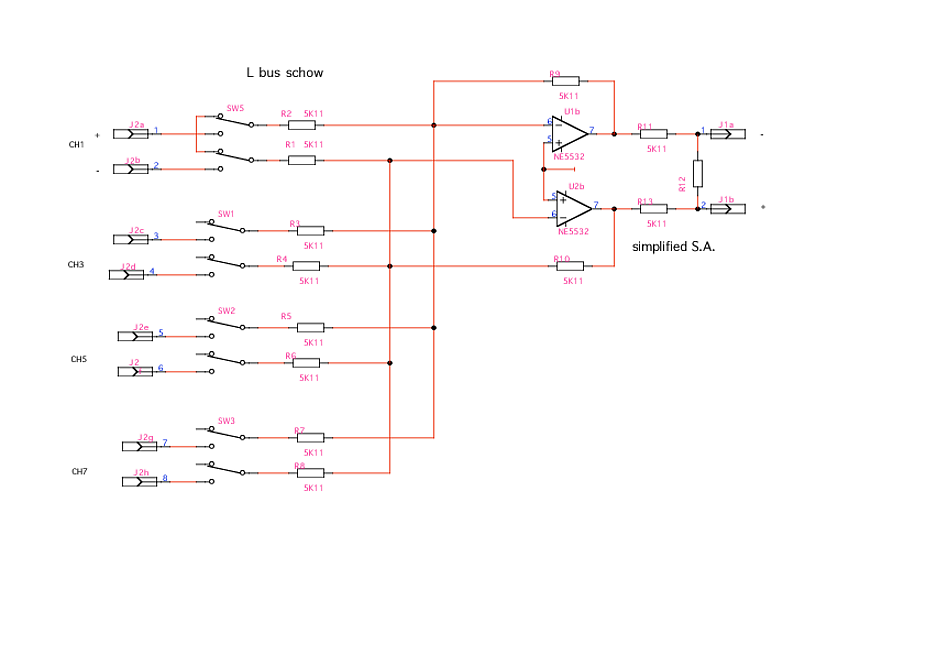Simple question: in a passive balanced summing network connected to a balanced virtual ground summing amplifier,
the channel mute switch, got to short the phases of the unused channel each other, live the channel unconnected or just live the channel unconnected living the phases floating ?
thank you
M.
the channel mute switch, got to short the phases of the unused channel each other, live the channel unconnected or just live the channel unconnected living the phases floating ?
thank you
M.



